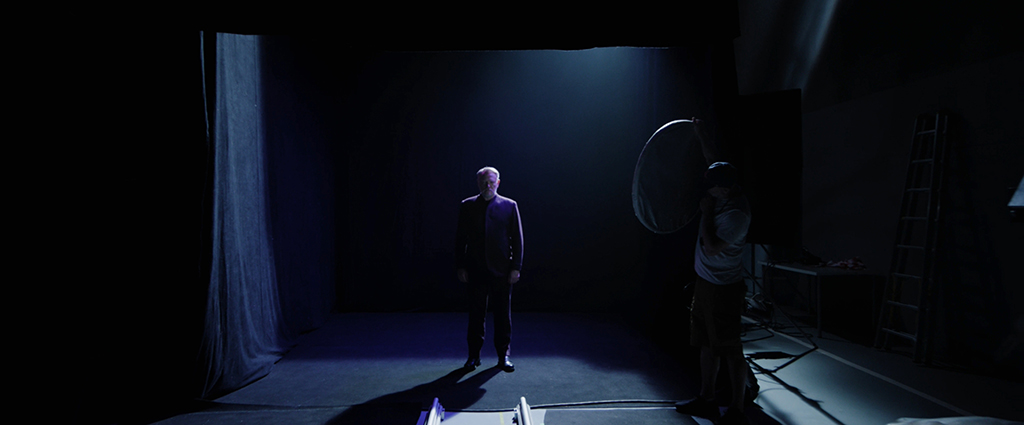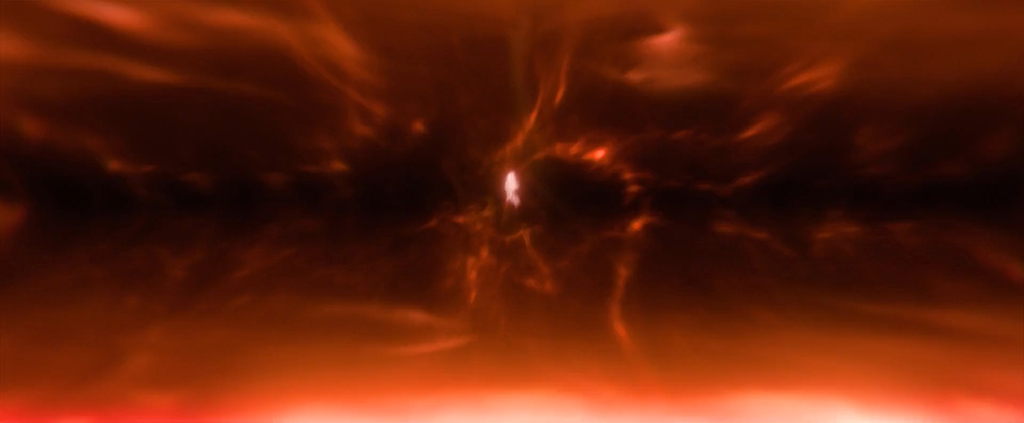By TREVOR HOGG
By TREVOR HOGG
Images courtesy of Apple TV, except where noted.
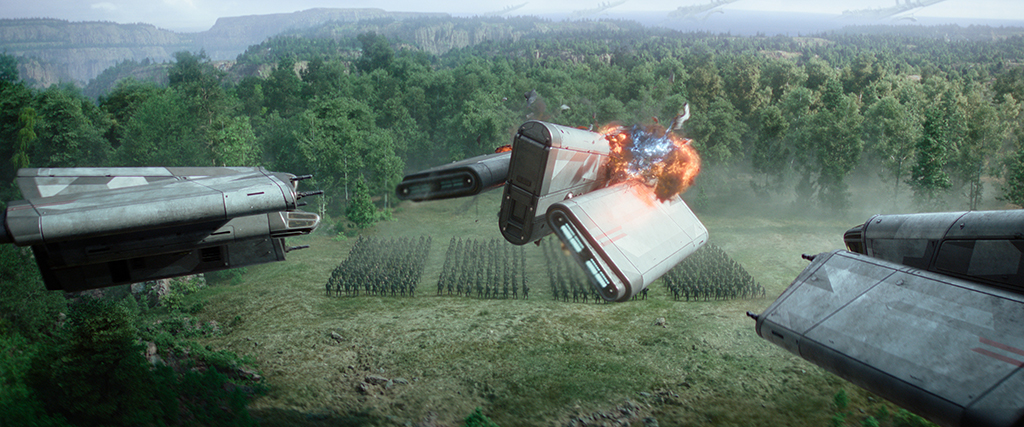
Defying expectations is something that Executive Producer/Showrunner David Goyer does well, and Visual Effects Supervisor Chris MacLean was cut from similar cloth when he was hired to work on the first three seasons of Foundation. “Back in 2019, I read the book on the way to my interview with Skydance,” recalls MacLean. “I thought, ‘It’s basically going to be The West Wing in space.’ They gave me the first script, and it wasn’t anything like that. David had taken the surface-level, encyclopedic version of Foundation that Isaac Asimov wrote and humanized the characters, transported us to their world and let us hang out with them.” Compared to previous seasons that conducted principal photography in the Canary Islands, Iceland and Malta, Season 3 was essentially confined to the Czech Republic and Poland, which in turn impacted what needed to be digitally augmented. “This season we did a lot more environment work than other seasons because we didn’t have the exotic backdrops we were shooting in on previous seasons.”

Close to 4,000 visual effects had to be produced for the 10 episodes by BOT VFX, Crafty Apes, Framestore, Accenture Song, Outpost VFX, Otomo FX, PFX, Rodeo FX and SSVFX. “There were close to 1,000 more shots than every other season because of all the environment extensions and production fixes,” MacLean states. “We had to do some cosmetic fixes with Demerzel’s dress and replaced the Sunmaster’s crown as well as the environment for the Sacratorium.” The post workflow was slightly different for Season 3. “On every season we would be leapfrogging into the next season, so I had Michael Enriquez for Season 1 and 2; he went off to do Dune: Prophecy. He would be finishing and working with the vendors throughout post while I was prepping for the next season, which we did for the last two seasons. For Season 3, because of the production delays, like the strikes and shutdowns, there was more of a gap between Season 3 and Season 4, so we weren’t prepping right away. We didn’t expect this gap. Gabriel Sanchez was brought on to be the post supervisor as Mike’s successor. I was to be potentially prepping for Season 4, but that never happened. Gabriel was amazing, and I wanted to keep him on, so we ended up splitting the vendors between us and working across the season with that division of labor.”
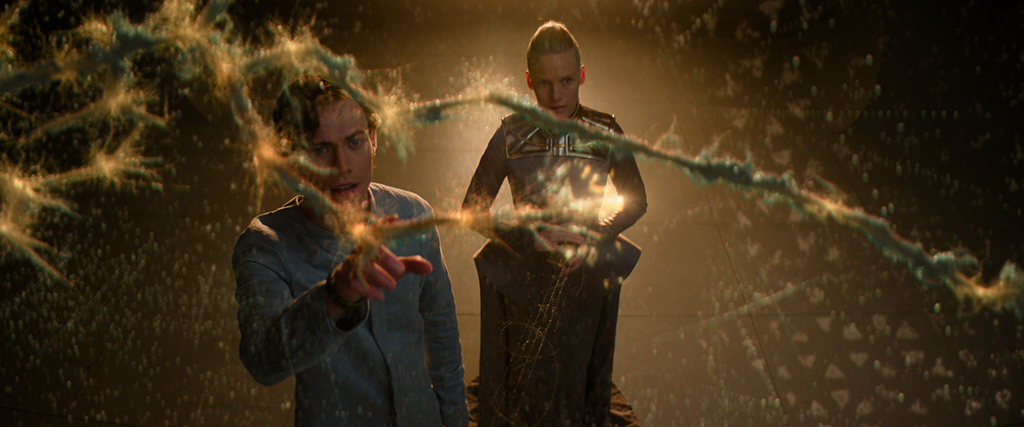


Serving as the main antagonist is the Mule, who throws the entire galaxy into chaos by having the power to mentally control people to the point where they will kill each other, as demonstrated by the Kalgan armada firing upon itself. “We started with detailed previs before we shot, but creative license was taken, so the footage led us to take a different path,” MacLean explains. “Once the editors got their hands on the sequence, it became more chaotic and visceral. We gave the sequence to Rodeo FX to animate the ships and add the complex effects simulations. After the first couple of rounds of iterations, we realized we needed more shots to fill out the story because of how chaotic everything was during the shoot.” Ten spaceships had to be fitted into the frame. “Putting it on a 24mm lens helped. However, the wider we went, the more environment had to be added back in.” The telepathic effect was treated differently in Season 3. “We had an objective view, which was a camera effect, and established that with the Mentalics in Season 2. Whenever Tellem Bond was around or affecting people, we put on detuned lenses, and the elements in the lens were skewed so it made this blurry effect at the edges. We established the rules, but the directors often took creative license and weren’t using them quite the way we had established, so we decided to control the effect in post for Season 3,” MacLean states.
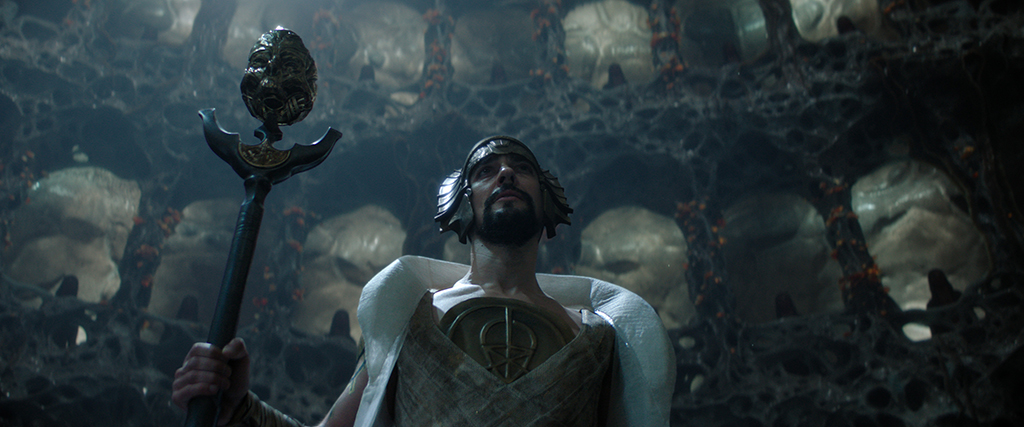
“The Flitter Bike Chase has been controversial online. People are on the fence as to whether or not they liked the sequence, but knowing what we did to get there, what was initially envisioned, where we got it to and the amount of time we had, I have a different perspective. I’m proud of what we were able to pull off!”
—Chris MacLean, Visual Effects Supervisor
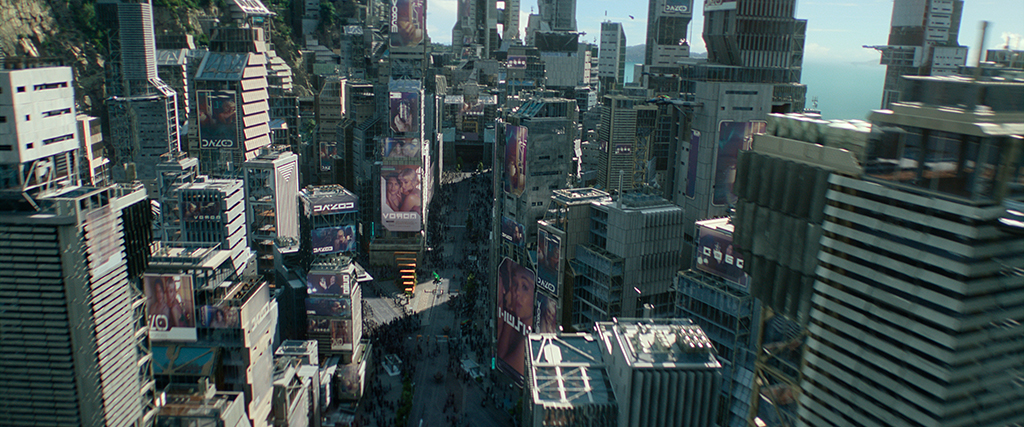

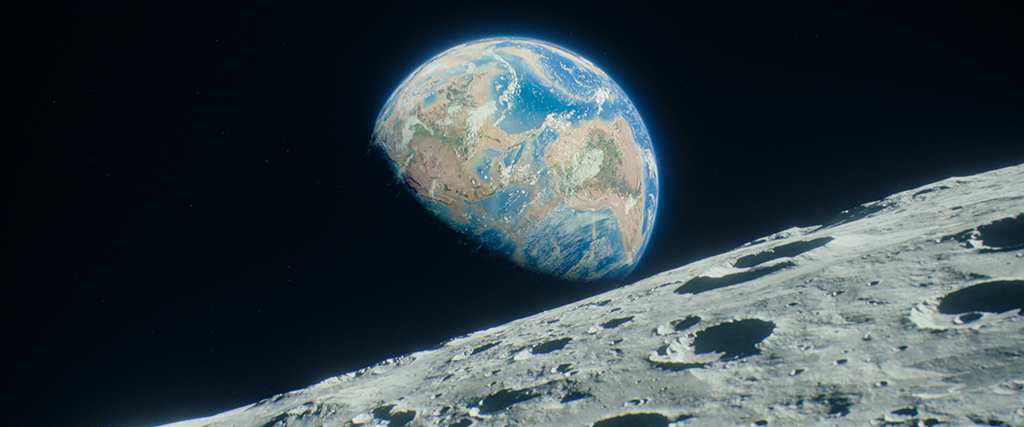
“As a general rule, we have to make sure if we’re doing a full CG shot that we use the same lens kit with visual effects that we use practically,” MacLean remarks. “The vendors are not allowed to step outside that lens kit. If we’re an anamorphic show, it’s all anamorphic defocus and bokeh. We have to treat everything in that same way; otherwise, it will take you out of it if you change the camera characteristics too much.” The pleasure planet of Kalgan is introduced in Episode 301. “Kalgan went through many iterations because people perceive pleasure in different ways. Some of the original concept art had these floating lilypad-style pools and neon lights. It was more like Macao or Thailand, but after realizing how much they would have to build practically, and the logistics of shooting in a place like that, we ended up going more grounded with everything. Rory Cheyne, our Production Designer, went more to Lake Como in Italy for inspiration. Once we got that concept art with the waterfalls, we decided that was the way to go. We still ended up going to Spain to shoot the villa when we introduce Beyta and Toran Mallow, which we replaced and extended digitally to make it fit in the rest of the world we built.”
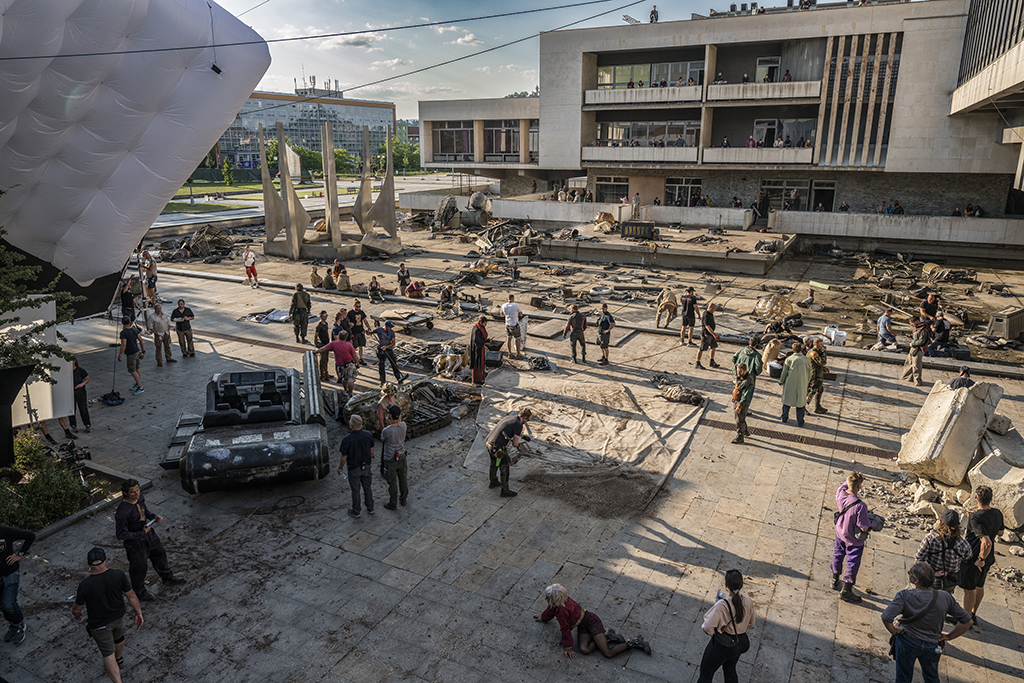
“The directing side of it doesn’t change the way I’ve done visual effects. But the fact that I got to shoot with visual effects in mind was helpful. … It was great to see my directing onscreen and say, ‘I did that.’ And then to see the visual effects around it and go, ‘I did that too.’ And when I say ‘I’, I mean ‘we’. Filmmaking is a team sport.”
—Chris MacLean, Visual Effects Supervisor
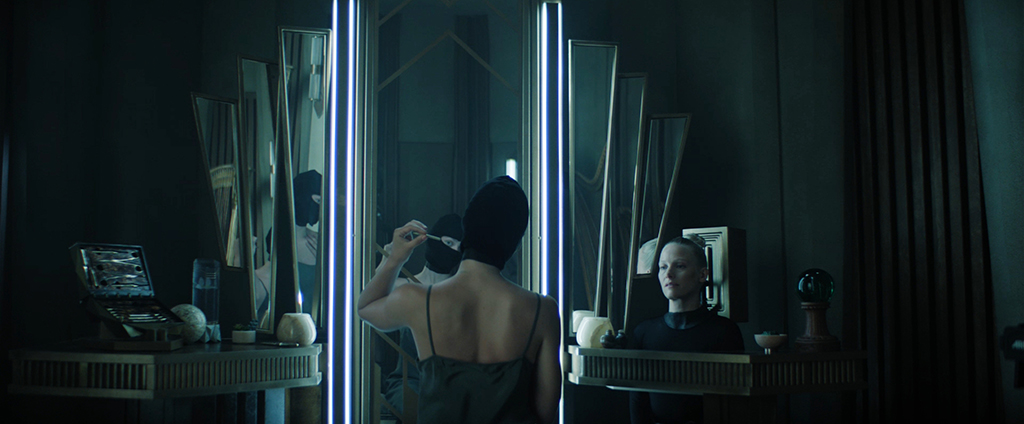
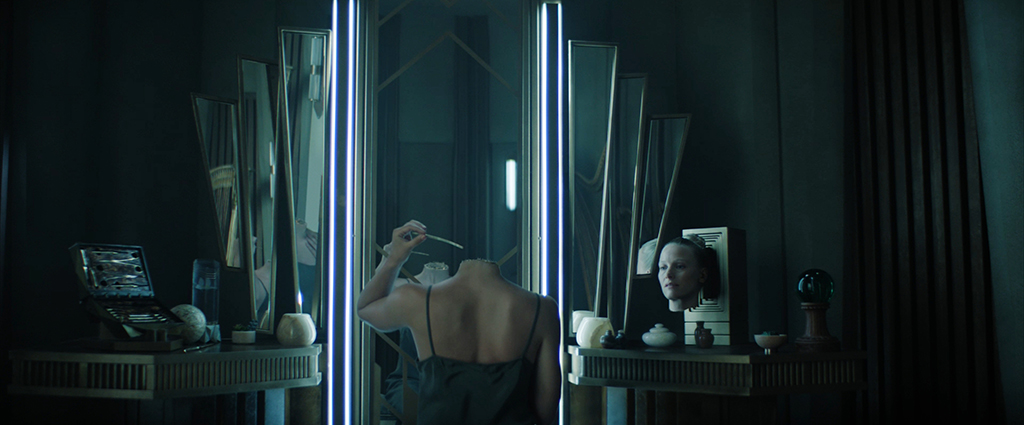
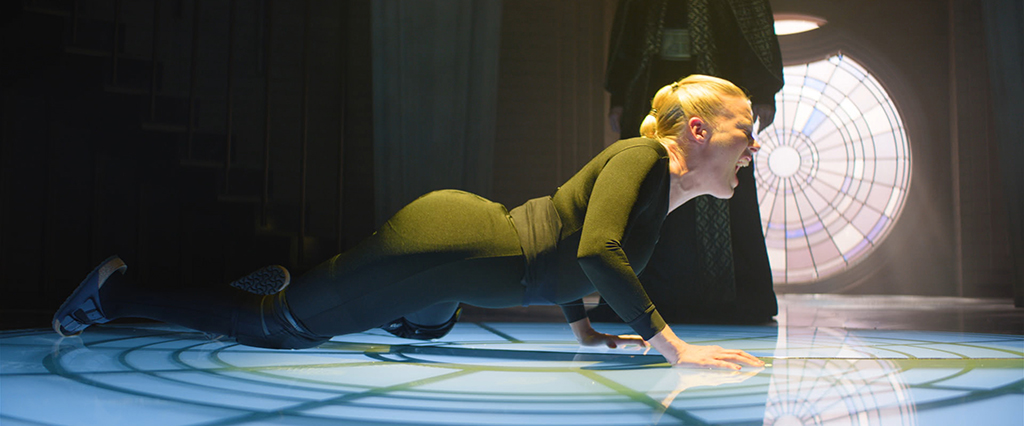



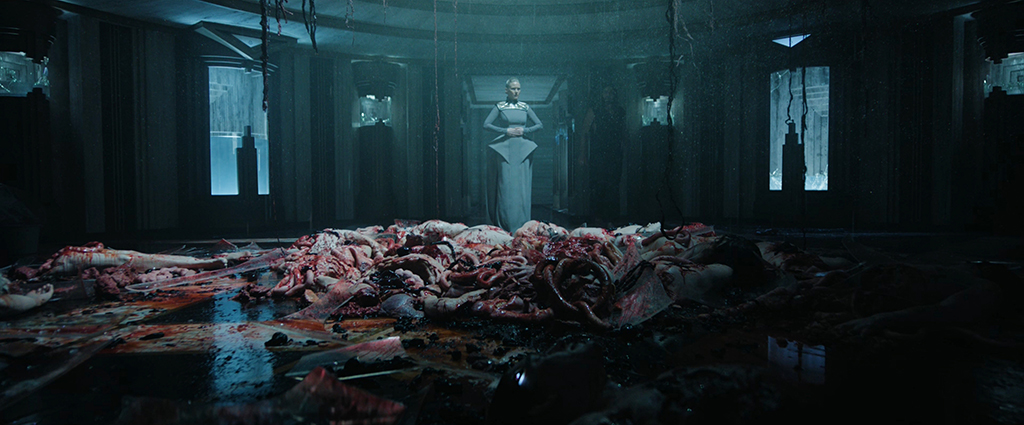



Haven was a hard environment to do because everything shot had to be replaced and built digitally. “We wanted it to look like Dallol in Ethiopia,” MacLean states. “There are those giant green sulfur pools. And we wanted the environment to be geothermal and hostile. We also looked at the hoodoo-like structures in the white desert in Egypt. We were looking for any visuals to give Haven a more windswept feel and make it feel more uninhabitable.” A major action sequence takes place in the desolate planet, which is tidally locked. “The Flitter Bike Chase was supposed to be all virtual production. We scouted a bunch of stages, then when David Goyer left the project we had to pivot and move a few things around. We ended up doing it in a more classic style on a grayscreen stage and shot it neutrally because we couldn’t replicate that environment inside. If that was green, there would have been no way to de-spill that big an environment.” Social media can be a blessing and a curse. “The Flitter Bike Chase has been controversial online. People are on the fence as to whether or not they liked the sequence, but knowing what we did to get there, what was initially envisioned, where we got it to and the amount of time we had, I have a different perspective. I’m proud of what we were able to pull off!”
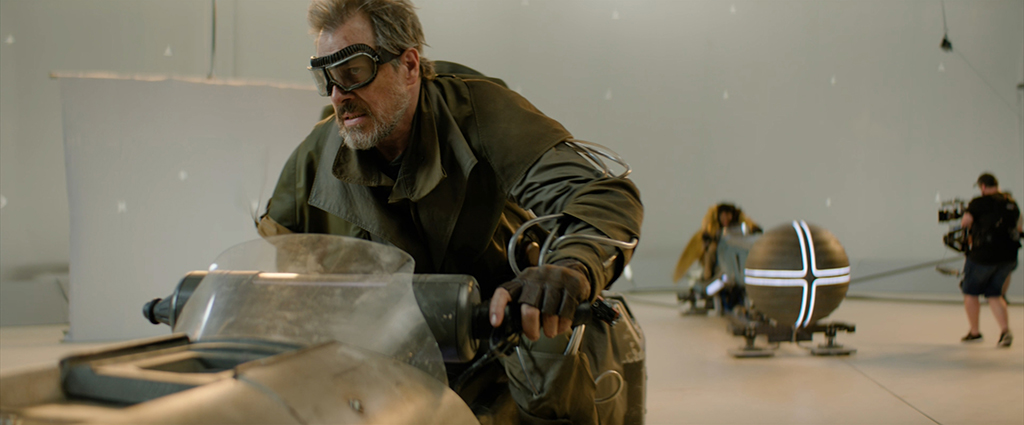
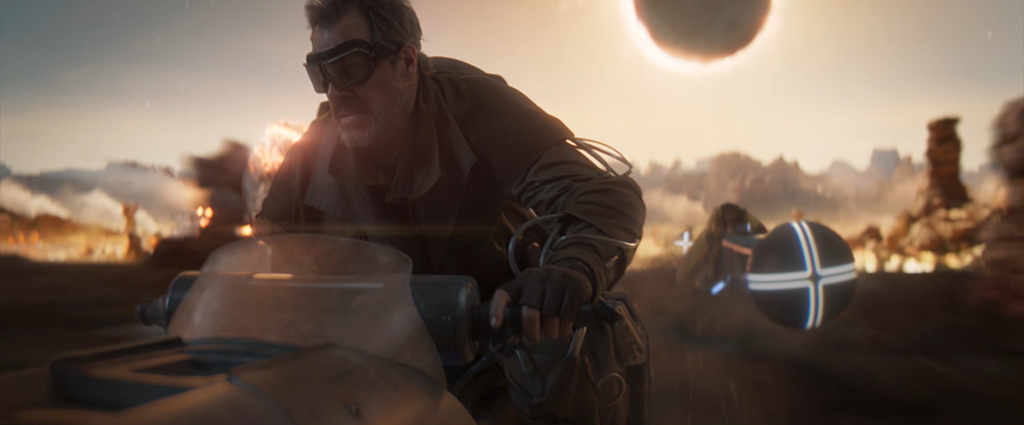
Demerzel has more of a role in Season 3. “Demerzel is Empire,” MacLean notes. “If you look at Cleon I, the first emperor who started the cloning system and reprogrammed Demerzel, it was set up so that she would always be there to make sure the cloning program never stopped. Dusk puts a baby in the middle of the Ascension Chamber, and because of her programming – and knowing that the baby is the last clone – she’s not allowed to let Empire die, so her programming forces her to try to save the baby, and Dusk kills her. Her death is the end of the Empire, or at least the clones. It’s emotional watching that because she is one of the best characters in the series.” Laura Birn, who portrayed Demerzel, had a lot of faith in the visual effects team. MacLean explains, “We always have complex conversations surrounding the effects for Demerzel, and this season was especially challenging because she keeps the Prime Radiant, given to her by Hari Seldon, in her chest. We designed this trapdoor in her dress, and had to make sure that it worked for the narrative and wasn’t gratuitous. We rehearse everything and make sure it works. That was an interesting visual effect because we had a body prosthetic she could lean into and operate. Laura would open the trapdoor, be able to reach into the prosthetic chest to pull the Prime Radiant out and put it back in. It was cumbersome to set up, but the effect worked well across the season.”
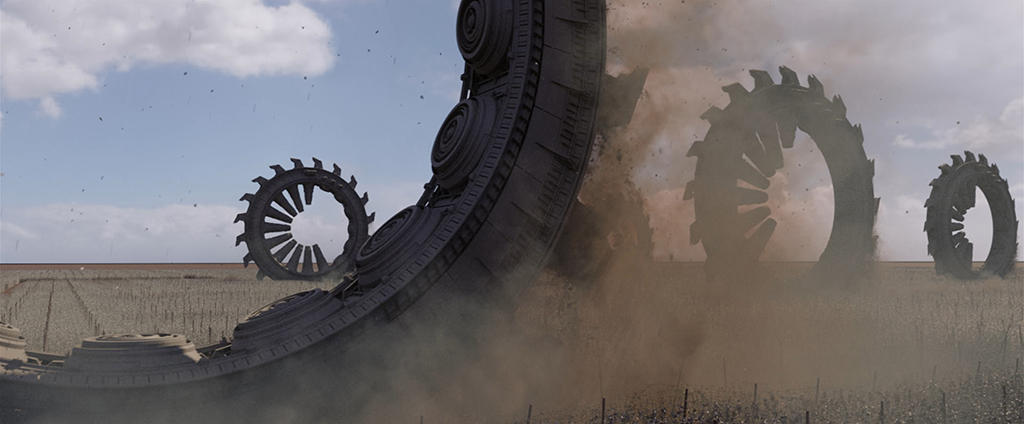

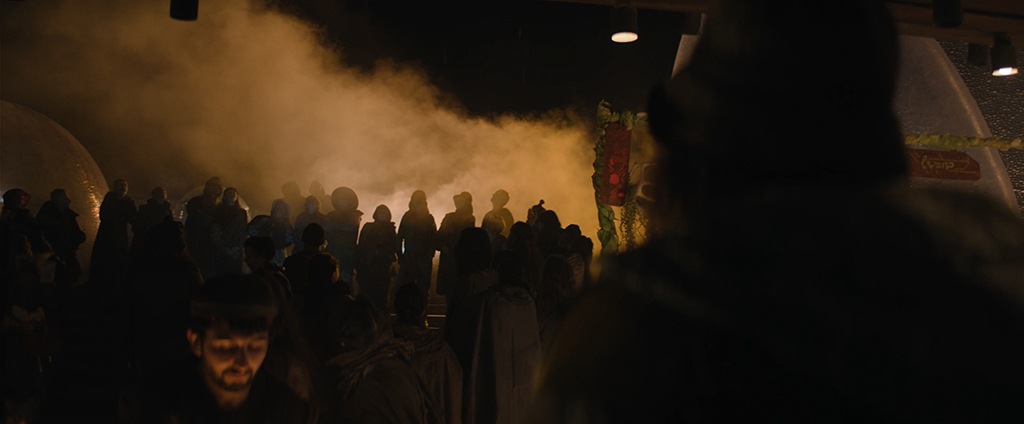
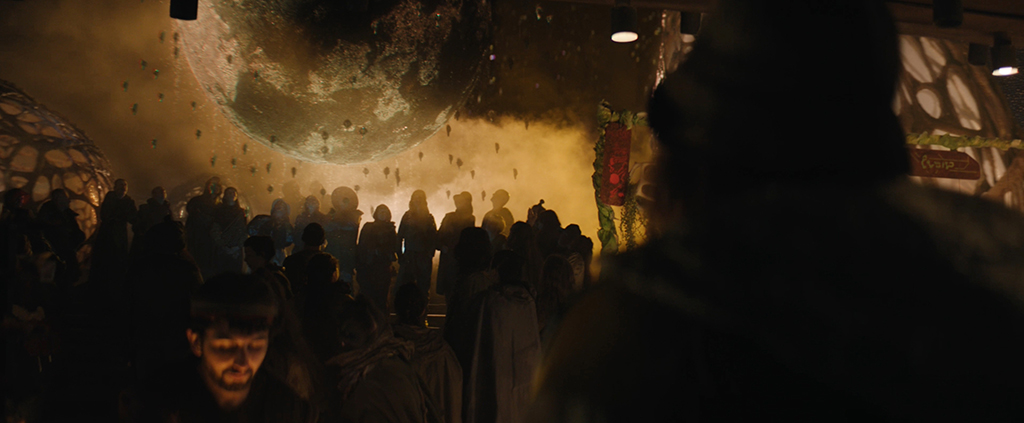
There is a fatal flaw in the cloning system. “The other thing that we lean into more this season is the decline of Empire and their faculties,” MacLean explains. “They’re starting to replace the Dusk Cleon a lot sooner because the mental degradation is happening much faster.” The mentally unstable Dusk unleashes the deadliest weapon belonging to Empire, the Novacula. “David Goyer and the writers try to write exactly what they want, which is great, but sometimes it’s difficult to visualize those ideas. The Novacula went through four or five different iterations before we landed on what we ended up with, the Hoberman-inspired collapsing sphere around the black hole. How the Novacula would actually fire went through a few iterations as well.” It was important to be aware of the intention of a shot. “You would be surprised how important lensing is to the whole process. A wide lens can give you scope, but it might not be right for the shot. We learned this with the Invictus in Season 1 and 2. You might want to be on a 80mm or fill the frame. Things always feel large if they don’t fit in the frame or engulf the frame.”
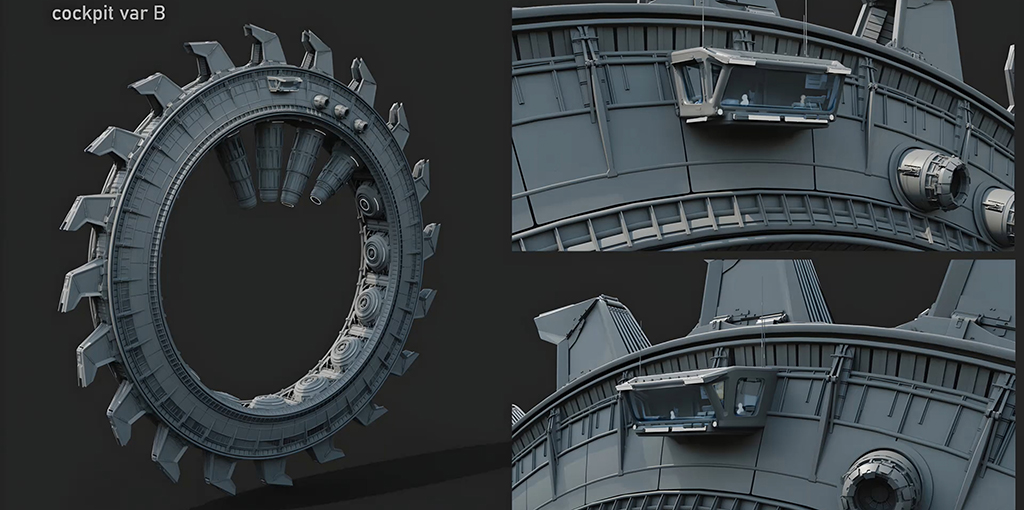
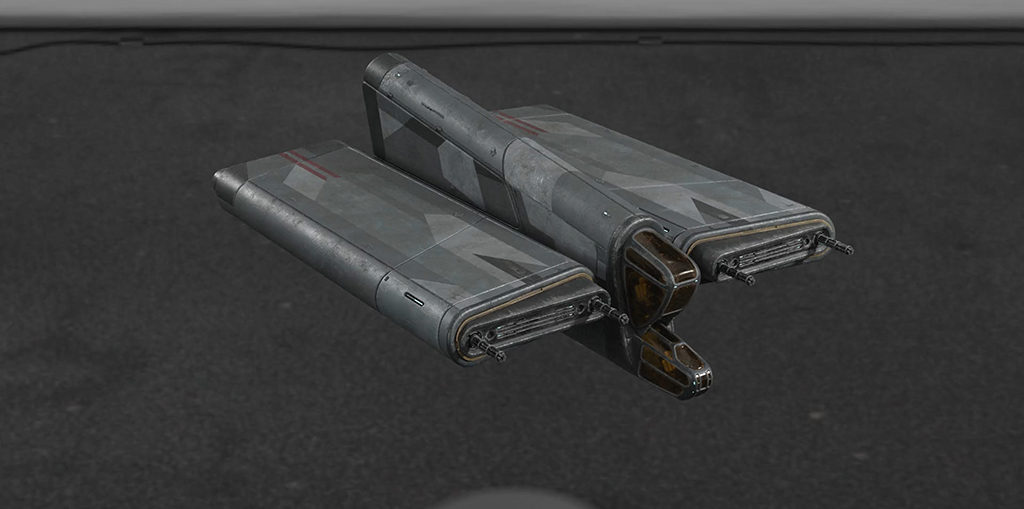
Sandograms were a huge part of the visual language of the show. “Every season we tried to do them better or differently,” MacLean notes. “This year, Screen Scene from Ireland did them. They’re actually horribly difficult to do because everything has to be dimensional. You must have 3D characters because you have to simulate the sand with grain solvers. On Season 3, we introduced holograms, not just to make our lives easier but also to show that Empire has stagnated and Foundation had developed this new tech that was clearer and easier to see, which says they’re growing and advancing technologically.” The Mural of Souls takes on a surreal quality. “Day goes to Mycogen and Songbird-17, and Oceanglass-49 has given him a truth serum in the form of mushrooms, and he starts to hallucinate. Day is running around the palace naked and ends up at the Mural of Souls looking at the sand portrait of the Dawn, Day and Dusk on their thrones. Then Demerzel steps out from behind the throne and comes forward. It’s the first time we actually see the animated image of the mural, which was a lot of fun. Demerzel starts explaining about the Cleon dynasty, sticks her head out and becomes herself. Accenture Song had to do 3D animation inside of a 2D panel with the sand moving. I know Kim [Davidson] and Mark [Elendt] at SideFX well. Their grain solver has gotten us out of so many problems! A big thank you for that!”
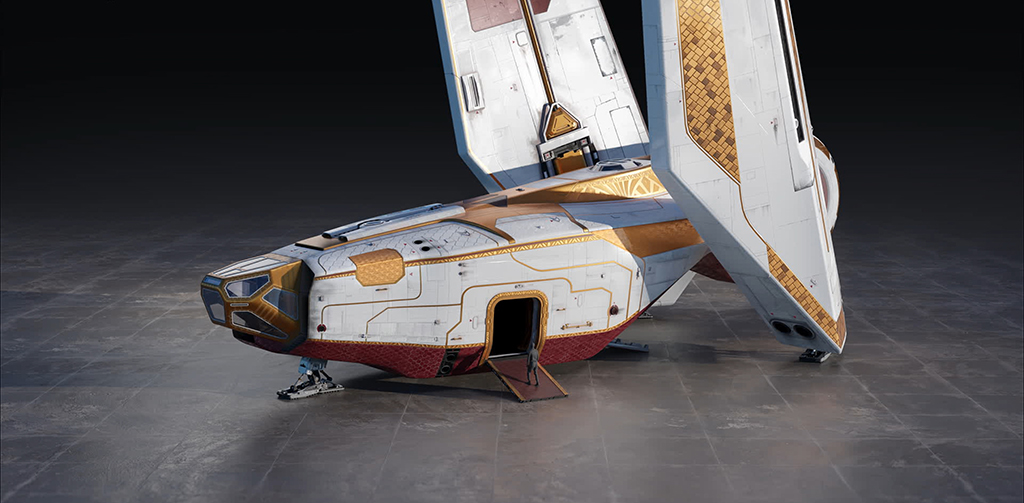
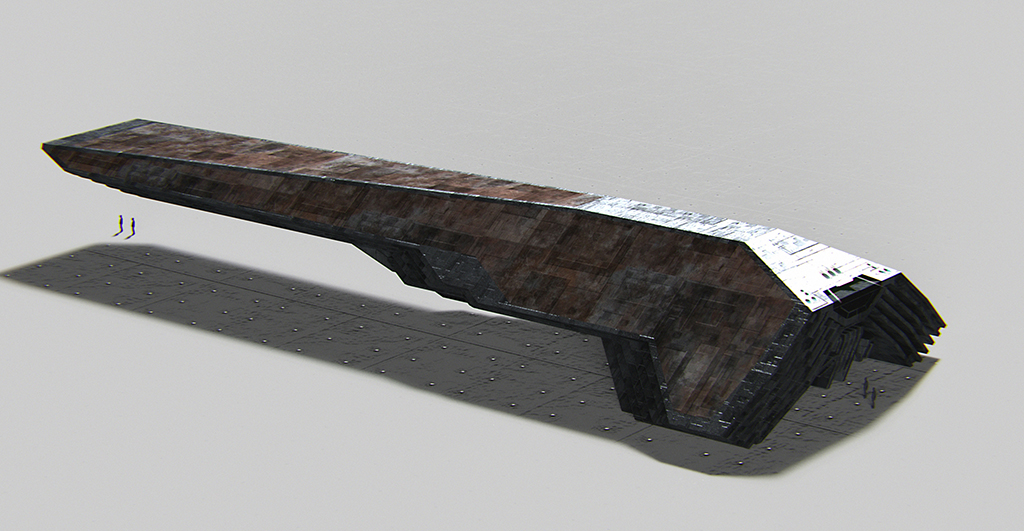
“To be completely honest, the hardest part was David Goyer leaving,” MacLean reveals. “That was difficult. Bill Bost [Executive Producer] and David Kob [Executive Producer] stepped up to the plate and helped us get Season 3 released. Kudos to them. On the production side, it was a big thing to try to reorganize everything and figure out the cadence of the season with David gone.” MacLean also served as one of the second unit directors. “The directing side of it doesn’t change the way I’ve done visual effects. But the fact that I got to shoot with visual effects in mind was helpful. It was a rewarding experience. and I hope I’m able to do it again. It was great to see my directing onscreen and say, ‘I did that.’ And then to see the visual effects around it and go, ‘I did that too.’ And when I say ‘I’, I mean ‘we’. Filmmaking is a team sport.”
